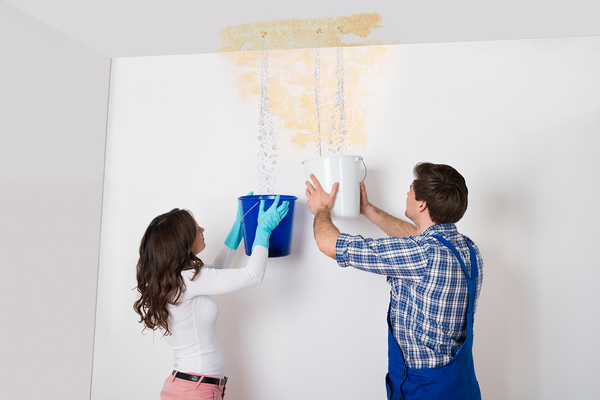Identifying the Main Factors for Water Leaks in Your Home
Identifying the Main Factors for Water Leaks in Your Home
Blog Article
The publisher is making several great observations regarding Most Common Causes of Leaky Pipes as a whole in this post on the next paragraphs.

Leakages not just create waste of water yet can additionally create unneeded damages to your house and also advertise undesirable natural development. Water leaks might go unnoticed since many of the pipework in our residence is concealed. By looking and understanding for daily circumstances that cause leaks, you can shield your house from future leaks and unneeded damage. Today, we will consider six leakage causes that may be triggering your pipes to drip.
Trespassing origins
A lot of water leakages start outside the house as opposed to inside it. If you discover an abrupt reduction in water pressure, claim in your tap, take time to head out and analyze your yard. You could discover damp patches or sinkholes in your backyard, which might indicate that tree roots are getting into water lines creating water to leak out. You can have your plumber look for invasion, specifically if you have trees or shrubs near your building.
Corroded water systems
This might be the cause of staining or bending on your water pipes. If our plumbing system is old, think about changing the pipelines since they are at a higher danger of rust than the more recent versions.
Defective Pipe Joints
Pipeline joints can degrade over time, resulting in water leakages. If you have loud pipes that make ticking or banging noises, particularly when the hot water is turned on, your pipe joints are probably under a whole lot of stress.
Instantaneous temperature level adjustments.
Severe temperature level modifications in our pipes can cause them to increase as well as contract unexpectedly. This development as well as contraction might trigger cracks in the pipelines, particularly if the temperature are listed below freezing.
Poor Water Connectors
Sometimes, a leak can be caused by loose hoses and also pipes that supply your home appliances. Typically, shifting is what creates the loose water Links. You may locate in the case of a washing maker, a hose may spring a leakage due to drinking during the spin cycle. In case of a water links leak, you might notice water running directly from the supply line or puddles around your devices.
Obstructed Drains
Blocked drains pipes could be frustrating and inconveniencing, however they can occasionally wind up causing an overflow causing break pipes. Keep eliminating any kind of materials that may drop your drains that might block them to stay clear of such aggravations.
All the above are sources of leaks but not all water leaks arise from plumbing leakages; some leaks could originate from roof covering leaks. All leaks must be repaired immediately to stay clear of water damage.
Leakages not just cause waste of water however can additionally create unneeded damage to your home as well as advertise undesirable natural growth. By recognizing and looking for day-to-day scenarios that create leakages, you can protect your home from future leaks and unnecessary damage. Today, we will look at six leak triggers that might be triggering your pipelines to drip.
At times, a leak can be triggered by loose hose pipes as well as pipes that supply your home appliances. In situation of a water connections leak, you may discover water running directly from the supply line or puddles around your devices.
How To Check For Water Leak In Your Home
How To Check for Leaks
The average household's leaks can account for nearly 10,000 gallons of water wasted every year and ten percent of homes have leaks that waste 90 gallons or more per day. Common types of leaks found in the home are worn toilet flappers, dripping faucets, and other leaking valves. These types of leaks are often easy to fix, requiring only a few tools and hardware that can pay for themselves in water savings. Fixing easily corrected household water leaks can save homeowners about 10 percent on their water bills.
To check for leaks in your home, you first need to determine whether you're wasting water and then identify the source of the leak. Here are some tips for finding leaks:
Take a look at your water usage during a colder month, such as January or February. If a family of four exceeds 12,000 gallons per month, there are serious leaks.
Check your water meter before and after a two-hour period when no water is being used. If the meter changes at all, you probably have a leak.
Identify toilet leaks by placing a drop of food coloring in the toilet tank. If any color shows up in the bowl after 10 minutes, you have a leak. (Be sure to flush immediately after the experiment to avoid staining the tank.)
Examine faucet gaskets and pipe fittings for any water on the outside of the pipe to check for surface leaks.
Undetected water leaks can happen without the home or business owner even realizing. If you suspect a water leak, but not able to find the source. It is time to contact a professional water leak detection service, The Leak Doctor.
How To Find a Water Leak In Your Home
https://www.leakdoctor.com/blog/How-To-Check-For-Water-Leak-In-Your-Home_AE197.html

I found that post on How to detect water leaks in your home when surfing around the web. Are you aware of somebody else who is fascinated with the topic? Do not hesitate to share it. Thanks so much for taking the time to read it.
Professional touch for plumbing woes. Report this page